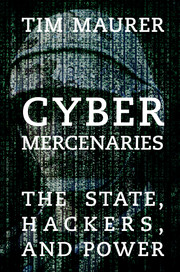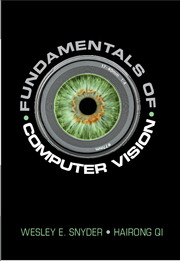Refine listing
Actions for selected content:
1372 results in Ebooks on robotics
8 - The Theory: State Responsibility and Cyber Proxies
- from Part III - Implications
-
- Book:
- Cyber Mercenaries
- Published online:
- 21 December 2017
- Print publication:
- 18 January 2018, pp 123-137
-
- Chapter
- Export citation
Part I - Of Brokers and Proxies
-
- Book:
- Cyber Mercenaries
- Published online:
- 21 December 2017
- Print publication:
- 18 January 2018, pp 1-68
-
- Chapter
- Export citation
Copyright page
-
- Book:
- Cyber Mercenaries
- Published online:
- 21 December 2017
- Print publication:
- 18 January 2018, pp iv-iv
-
- Chapter
- Export citation
Contents
-
- Book:
- Cyber Mercenaries
- Published online:
- 21 December 2017
- Print publication:
- 18 January 2018, pp v-vii
-
- Chapter
- Export citation
Part II - Cyber Proxies Up Close
-
- Book:
- Cyber Mercenaries
- Published online:
- 21 December 2017
- Print publication:
- 18 January 2018, pp 69-120
-
- Chapter
- Export citation
9 - The Practice: Shaping Cyber Proxy Relationships
- from Part III - Implications
-
- Book:
- Cyber Mercenaries
- Published online:
- 21 December 2017
- Print publication:
- 18 January 2018, pp 138-150
-
- Chapter
- Export citation
Future Research
-
- Book:
- Cyber Mercenaries
- Published online:
- 21 December 2017
- Print publication:
- 18 January 2018, pp 158-163
-
- Chapter
- Export citation
Acknowledgments
-
- Book:
- Cyber Mercenaries
- Published online:
- 21 December 2017
- Print publication:
- 18 January 2018, pp xvi-xviii
-
- Chapter
- Export citation
Notes
-
- Book:
- Cyber Mercenaries
- Published online:
- 21 December 2017
- Print publication:
- 18 January 2018, pp 164-234
-
- Chapter
- Export citation
7 - Change Over Time: China’s Evolving Relationships with Cyber Proxies
- from Part II - Cyber Proxies Up Close
-
- Book:
- Cyber Mercenaries
- Published online:
- 21 December 2017
- Print publication:
- 18 January 2018, pp 107-120
-
- Chapter
- Export citation
Abbreviations
-
- Book:
- Cyber Mercenaries
- Published online:
- 21 December 2017
- Print publication:
- 18 January 2018, pp xix-xx
-
- Chapter
- Export citation
5 - Cyber Proxies on a Loose Leash: Iran and Syria
- from Part II - Cyber Proxies Up Close
-
- Book:
- Cyber Mercenaries
- Published online:
- 21 December 2017
- Print publication:
- 18 January 2018, pp 81-93
-
- Chapter
- Export citation
10 - Conclusion: Cyber Proxies, the Future, and Suggestions for Further Research
- from Part III - Implications
-
- Book:
- Cyber Mercenaries
- Published online:
- 21 December 2017
- Print publication:
- 18 January 2018, pp 151-157
-
- Chapter
- Export citation
Index
-
- Book:
- Cyber Mercenaries
- Published online:
- 21 December 2017
- Print publication:
- 18 January 2018, pp 235-246
-
- Chapter
- Export citation
3 - Cyber Power: Geopolitics and Human Rights
- from Part I - Of Brokers and Proxies
-
- Book:
- Cyber Mercenaries
- Published online:
- 21 December 2017
- Print publication:
- 18 January 2018, pp 50-68
-
- Chapter
- Export citation
Figures
-
- Book:
- Cyber Mercenaries
- Published online:
- 21 December 2017
- Print publication:
- 18 January 2018, pp viii-viii
-
- Chapter
- Export citation
6 - Cyber Proxies on the Loose: The Former Soviet Union
- from Part II - Cyber Proxies Up Close
-
- Book:
- Cyber Mercenaries
- Published online:
- 21 December 2017
- Print publication:
- 18 January 2018, pp 94-106
-
- Chapter
- Export citation
Preface
-
- Book:
- Cyber Mercenaries
- Published online:
- 21 December 2017
- Print publication:
- 18 January 2018, pp ix-xv
-
- Chapter
- Export citation

Cyber Mercenaries
- The State, Hackers, and Power
-
- Published online:
- 21 December 2017
- Print publication:
- 18 January 2018

Fundamentals of Computer Vision
-
- Published online:
- 25 October 2017
- Print publication:
- 28 September 2017
